Why Are My Chickens Roosting in Trees?
Raising chickens can be an immensely rewarding experience. These feathered friends become part of our lives, providing us with fresh eggs and hours of entertainment with their quirky behaviors. But what happens when you notice your chickens perched up high in the trees, seemingly defying gravity? You might be wondering, “Why are my chickens roosting in trees?” In this article, we’re going to unravel the mysteries behind this behavior and explore ways to address it.
Understanding Chicken Roosting Behavior
Before we dive into the leafy canopies where your chickens are hanging out, let’s get a grip on chicken roosting behavior.
Roosting Defined: Roosting is simply the act of chickens perching or settling down for the night. It’s their version of bedtime, and it’s a deeply ingrained instinct.
Natural Roosting in the Wild: In the wild, chickens roost to stay safe from ground predators. It’s a survival strategy that helps them avoid becoming a midnight snack.
For example, think of a wild jungle where a chicken’s ancestor might have roosted high in the trees to stay out of reach of prowling predators like leopards and snakes. This behavior helped them survive and pass on their genes, ingraining it in domestic chickens today.
Chicken Instincts and Safety: Roosting also has a lot to do with chicken instincts. It’s where they feel secure, away from potential threats lurking below.
Imagine you’re sleeping in your cozy bed, and suddenly you hear a strange noise outside your window. You’d feel much safer inside your room, right? Chickens share this instinct for safety, preferring to perch high to avoid ground-level dangers.
Reasons Chickens Roost in Trees
Now that we’ve scratched the surface of roosting behavior, let’s explore the reasons why your chickens might be trading the coop for the treetops.
Lack of Suitable Coop or Roosting Space
Overcrowding in the Coop: Chickens need their personal space, even when they’re asleep. If your coop is overcrowded, they might choose the freedom of the great outdoors over a crowded room.
Picture a room with too many people squeezed in, everyone trying to find a comfortable spot to sleep. It’s a recipe for discomfort. Chickens feel the same way in a cramped coop and seek the spaciousness and fresh air of the outdoors.
Inadequate Roosting Bars: Chickens love roosting on horizontal bars. If your coop doesn’t have enough of these, they might seek out alternatives.
Think of a chicken’s roosting preference like your choice of a comfortable bed. You’d naturally gravitate towards the one that offers better support and comfort. Chickens are no different; they prefer wide, flat roosting bars for a good night’s rest.
Predators and Threats in the Coop


Think of your chickens as intuitive security experts. They know when something’s amiss. If they detect even a hint of danger, they’ll make a quick escape to the nearest safe haven, which might be a tree.
Temperature and Weather Factors
Seeking Cooler Spots in Hot Weather: Just like us, chickens can feel the heat. During scorching summer nights, they might choose to roost in trees where it’s cooler.
Imagine trying to get a good night’s sleep in a stuffy, overheated room during the summer. You’d do whatever it takes to find a comfortable, breezy spot to rest, right? Chickens have the same idea; they seek cooler roosting spots for a more comfortable sleep.
Avoiding Cold Drafts in Winter: On the flip side, during winter, chickens might avoid cold drafts in the coop by seeking refuge in trees.
Think of a tree as a warm, cozy spot by the fireplace during the cold winter months. Chickens are smart enough to know that avoiding drafts keeps them comfortable and healthy.
Social Dynamics and Hierarchy Within the Flock
Chickens have their social hierarchies, and sometimes, the lower-ranked birds might feel compelled to roost outside the coop.
Think of your chickens as high school students. The cool kids sit at one table, and the rest might choose to eat elsewhere to avoid confrontation. In the chicken world, lower-ranked birds may feel more at ease roosting in trees to avoid potential conflicts with dominant flock members.
Risks and Problems of Tree Roosting
As charming as the image of chickens roosting in trees may be, it comes with its set of concerns and issues.
Vulnerability to Predators
Up in the trees, chickens are easy targets for nocturnal predators like owls, raccoons, and even tree-climbing snakes.
Imagine being at a buffet dinner with no protective barrier between you and the hungry guests. Not a great situation, right? That’s precisely the risk your chickens face when roosting in trees.
Exposure to Harsh Weather Conditions
Trees may offer some shelter, but chickens roosting in trees are still exposed to rain, wind, and cold temperatures.
Think of camping without a tent during a rainstorm. It might sound adventurous, but it’s not the most comfortable experience. Chickens, like us, prefer to stay dry and cozy.
Impact on Egg-Laying and Chicken Health
Chickens need quality sleep to lay eggs consistently and maintain good health. Roosting in trees can disrupt their sleep patterns.
It’s like trying to work or study after a sleepless night. Your productivity and well-being take a hit. Chickens need a good night’s rest to perform their best and stay healthy.
Potential Damage to Trees
Chickens have a knack for scratching and pecking, which can damage tree branches and leaves over time.
Think of your chickens as mischievous little artists with a penchant for creating abstract art on your trees. While it may not be intentional, their behavior can harm the trees in your yard.
How to Encourage Proper Roosting Behavior


Now that we’ve uncovered the ‘whys’ and ‘whats’, let’s delve into the ‘hows’ of encouraging your chickens to roost where they should – inside the coop.
Improving Coop Conditions
Providing Adequate Space: Ensure your coop isn’t overcrowded. Chickens need enough space to roost comfortably.
Think of it as upgrading from a cramped studio apartment to a spacious house – everyone deserves room to stretch their wings.
Installing Suitable Roosting Bars: Horizontal bars make for ideal roosting spots. Install enough of them at varying heights to accommodate your flock.
Imagine choosing between a cozy window seat and a hard, uncomfortable stool. You’d naturally pick the comfier option. Chickens share this preference for comfortable roosting bars.
Predator-Proofing the Coop
Take measures to secure the coop against predators. Use strong locks, mesh, and other protective measures to keep your chickens safe.
Think of adding a security system to your home. You’re ensuring that your loved ones stay safe from potential threats. In this case, your loved ones happen to be your feathered friends.
Managing Temperature and Climate in the Coop
Keep the coop comfortable year-round. Provide proper ventilation, insulation, and heating if needed to maintain an ideal environment.
Think of adjusting the thermostat in your home to stay cozy in all seasons. Chickens, just like us, appreciate a comfortable living space.
Addressing Social Issues Within the Flock
Monitor your chickens’ interactions and intervene if there’s bullying or social stress within the flock.
Imagine being a referee in a soccer game. You step in when things get rough to ensure a fair and peaceful match. In the chicken world, a harmonious flock is more likely to roost together in the coop.
Training Chickens to Roost in the Coop
Sometimes, a little chicken psychology can go a long way. Gently guide your chickens to the coop at night until they get the hang of it.
Think of it as teaching a pet tricks. With patience and practice, they’ll learn the ropes. Chickens are intelligent birds and can adapt to new routines with some gentle guidance.
Troubleshooting Tree Roosting
If your chickens persist in tree roosting despite your efforts, it’s time to troubleshoot the issue.
Identify Specific Causes for Your Flock
Every flock is unique, so it’s essential to pinpoint the precise reasons behind your chickens’ tree-roosting behavior.
Think of solving this puzzle as similar to detective work. You gather clues to uncover the truth behind the mystery. Once you understand what’s driving your chickens to the trees, you can tailor your solutions accordingly.
Seek Advice from Poultry Experts
When in doubt, don’t hesitate to reach out to poultry experts or local agricultural extension services for guidance.
It’s similar to consulting a doctor when you’re unsure about a persistent health issue. Experts have the knowledge to diagnose and treat effectively. They’ve encountered a wide range of chicken behaviors and can provide valuable insights.
Success Stories and Case Studies
To inspire and reassure you, let’s explore some real-life success stories and case studies of chicken owners who successfully addressed tree-roosting behavior.
Think of these stories as testimonials from fellow chicken enthusiasts who’ve overcome the same challenges you’re facing. They’ve tried various strategies and found effective solutions, offering hope and inspiration to chicken owners dealing with tree-roosting issues.
Conclusion
In the world of chickens, roosting in trees might seem like a quirky habit, but it’s essential to understand the underlying reasons. By addressing these factors and creating a safe, comfortable coop environment, you can encourage your chickens to roost where they belong. Remember, happy chickens make for better egg-layers and healthier, more contented flocks. So, bid those treetops farewell and invite your feathered friends back to their cozy coop for a good night’s sleep!

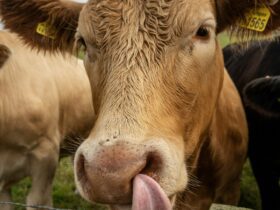
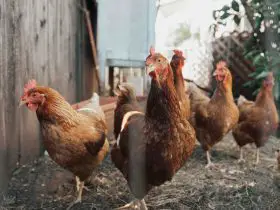

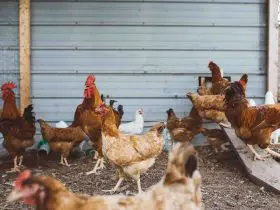

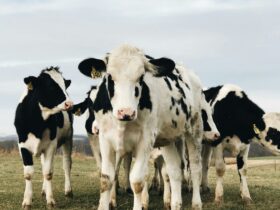

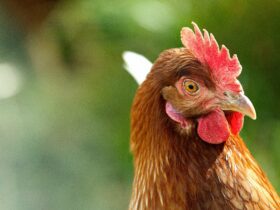



Hello!! Welcome to Anim Farm